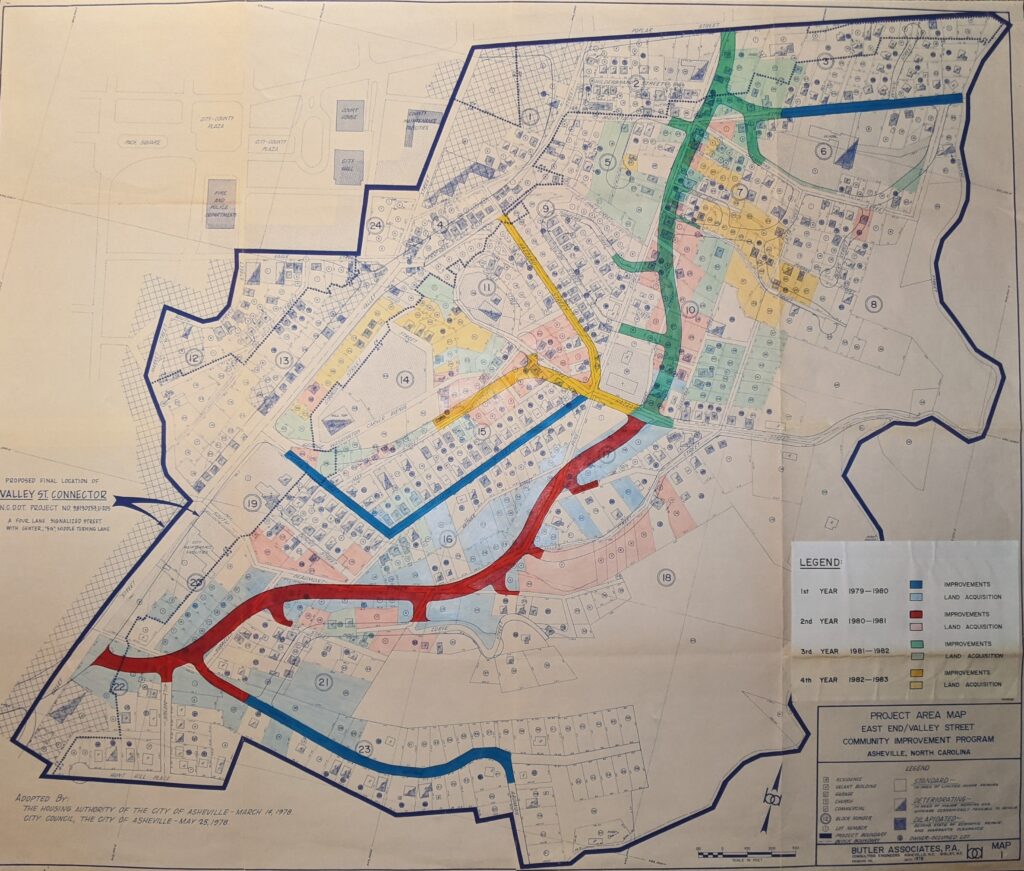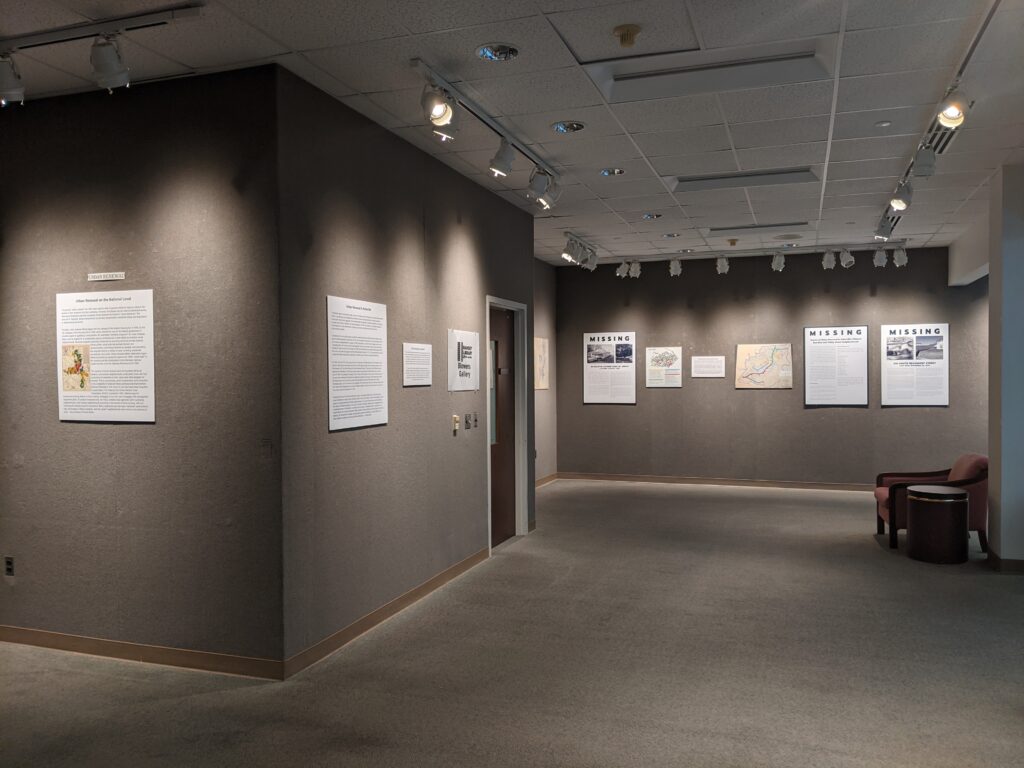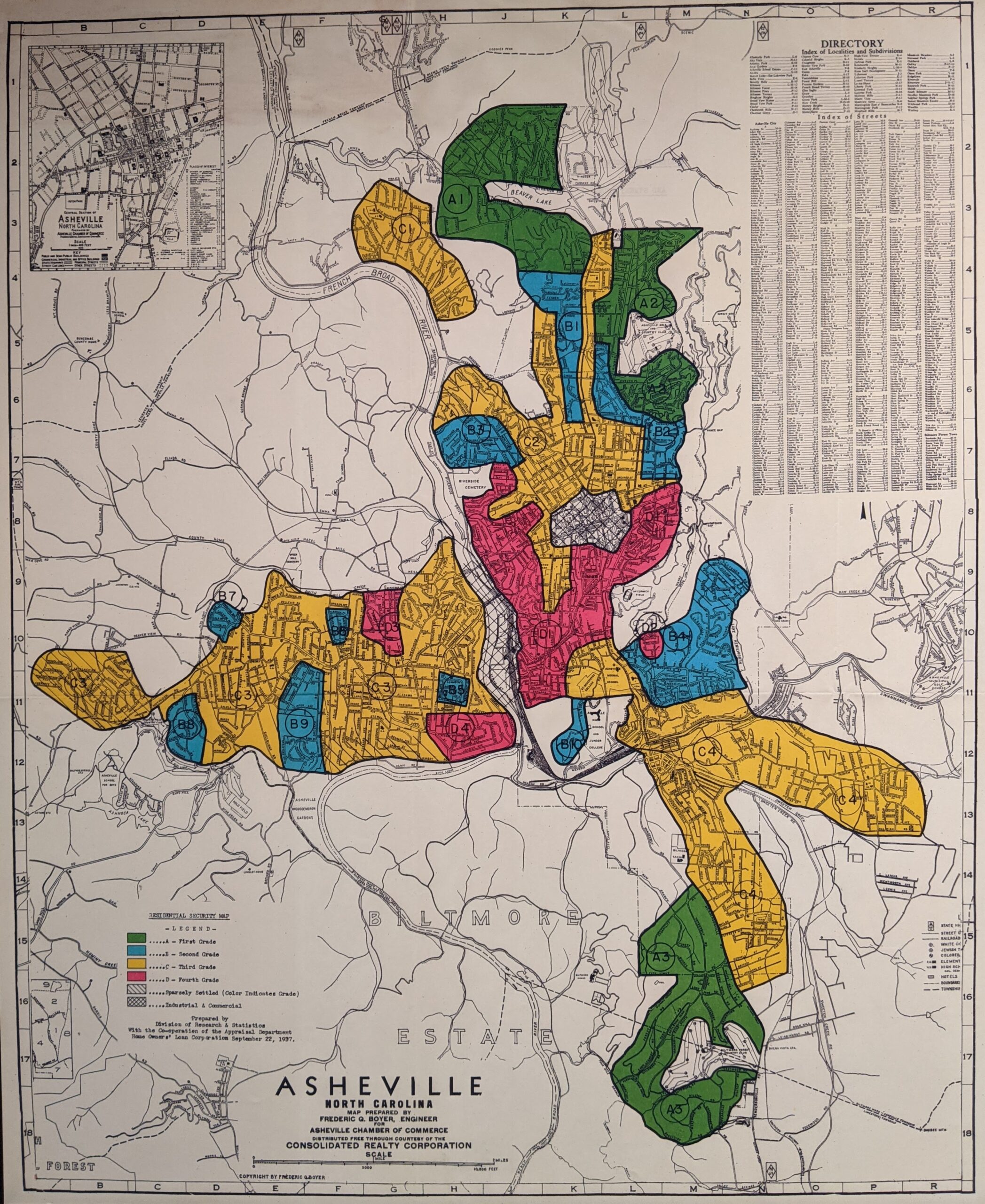Urban Renewal in Asheville
On Exhibit: Spring Semester, 2021 in Ramsey Library’s Blowers Gallery >View Entire Exhibition Online in Accessible Format<
Exhibit Creators: Ramsey Library’s Special Collections, UNCA Professor Patrick Bahls, and students in Professor Bahls’ UNCA course, “Urban Renewal in Asheville and Elsewhere” taught in Fall 2019.

This exhibit explores the local history, intents, and impacts of the Urban Renewal movement beginning with the U.S. federal Housing Act of 1949. It contextually presents individual cases of community change in the Asheville area through text, maps, and photographs, including with the controversial 1937 Residential Security, aka ‘Red-lined,’ map of Asheville’s neighborhoods (see left-hand image). The entire exhibit is available online in screen reader accessible format here. Illustrative excerpt from this exhibit: […] The impacts of urban renewal were not equitably felt by all citizens. Low-income neighborhoods, particularly those with high proportions of residents of color, were more often targeted for renewal. This is unsurprising, given longstanding racial inequities in the availability of funds for home purchase and improvement. (Richard Rothstein’s The Color of Law describes these inequities in great detail.) For instance, the Home Owners’ Loan Corporation (HOLC), founded in 1933, offered ways for homeowners facing default on their existing mortgages to buy into new mortgages with manageable repayment plans. To assess investment risk, the HOLC enlisted local agencies’ aid in surveying neighborhoods, color-coding neighborhoods according to the results of those surveys, with red indicating the riskiest areas for investment. Many neighborhoods that were “red-lined” were home to high percentages of Black residents, and few “green” neighborhoods were home to any persons of color. – text courtesy of Patrick Bahls.

